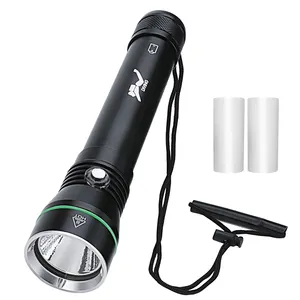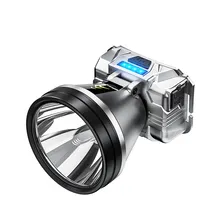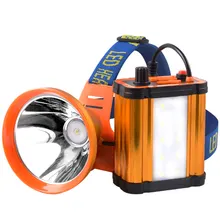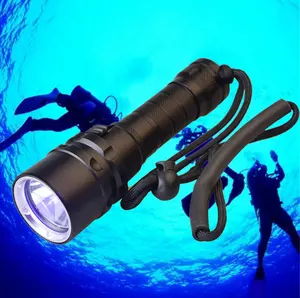An underwater flashlight is a critical piece of equipment for any diver. It is used to illuminate the underwater environment, making it easier to explore and observe marine life. There are several types of underwater flashlights, each designed to serve a specific purpose. The handheld underwater flashlight for scuba diving is common. It is compact and easy to carry, and it can be used in both shallow and deep waters. This type of flashlight is often used by recreational divers, underwater photographers, and marine biologists. The canister-style scuba dive torch is another type. It is larger and more powerful than handheld flashlights, making it ideal for technical divers who need to illuminate large areas or explore deep caves and wrecks.
Materials used in underwater flashlights
The materials used in the construction of underwater flashlights are crucial to their performance and durability. Some underwater flashlights are made of high-strength, corrosion-resistant materials such as aluminum and stainless steel. Aluminum is lightweight, durable, and resistant to corrosion, making it an excellent material for flashlights designed for use in saltwater environments. Stainless steel is also used due to its strength and resistance to rust and corrosion. Some underwater flashlights also feature plastic or glass lenses. Plastic lenses are lightweight and impact-resistant, while glass lenses provide superior light transmission and clarity.
Features of underwater flashlights
One of the key features of an underwater flashlight is its water resistance. The flashlight should be able to withstand the pressure of deep water without leaking or failing. Another important feature is the light output. This is measured in lumens, and a higher lumen rating indicates a brighter light. Many divers prefer a LED underwater flashlight because LEDs are energy-efficient, durable, and can produce a bright, white light. The beam angle, or the width of the light beam, is another important feature. A narrow beam is ideal for exploring small areas or looking at specific objects, while a wide beam is better for illuminating larger areas. The battery life is also a critical feature. Underwater flashlights for diving should have a long battery life to ensure that they can last for the duration of the dive.
Underwater flashlights are essential for divers and marine explorers, as they provide illumination in the murky depths where natural light fails to penetrate, ensuring safe navigation and clear vision. They are specifically designed to withstand high pressures and the corrosive nature of saltwater, making them durable and suitable for underwater activities. Additionally, these flashlights often feature adjustable beams and intensities, allowing users to customize their lighting based on the specific needs of their underwater environment.
An underwater flashlight is an essential tool for any diver. By understanding the different types, materials, and features of these flashlights, divers can choose the scuba diving flashlight for their needs.







































 浙公网安备 33010002000092号
浙公网安备 33010002000092号 浙B2-20120091-4
浙B2-20120091-4